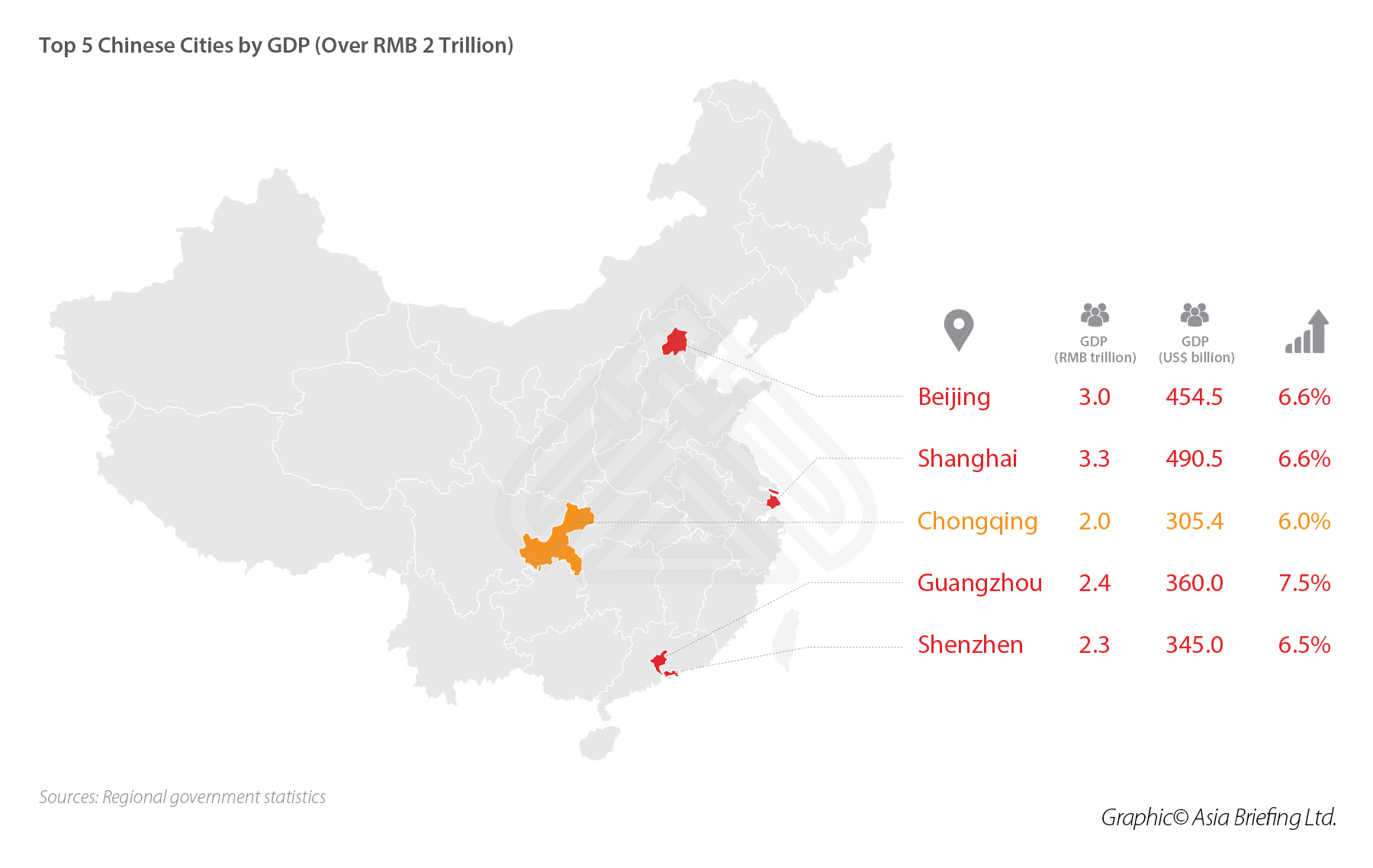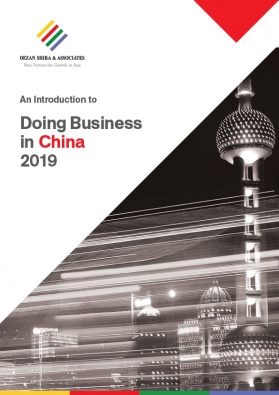What Chongqing’s Declining Growth Rate Tells Us about China’s Slowdown

Chongqing’s declining growth rate has seen it drop to the bottom of the list of China’s fastest growing regions. China Briefing puts a spotlight on the city and examines how despite its recent economic performance (which may also explain China’s overall slowdown) foreign investors won’t be leaving yet.
In 2018, Chongqing became China’s fifth city to generate over RMB 2 trillion (US$295 billion) in GDP – after Beijing, Shanghai, Guangzhou, and Shenzhen. A large manufacturing base located by the Yangtze river in the midwest of China, Chongqing’s economy posted 15 consecutive years of double-digit growth beginning in 2002, reaching a high of 17.1 percent in 2010.
Last year, however, Chongqing’s GDP growth rate slumped to six percent – far below its target of 8.5 percent and behind the national average of 6.6 percent. This dramatically brought down Chongqing’s rank in the list of China’s 31 fastest growing regions – from being first in 2016 to 24th in 2018.
What explains this sudden dip in Chongqing’s growth?
There are many reasons. But in short, the decline in GDP growth is mainly attributed to two factors: one, Chongqing’s economy slowed to receive massive state investments and, two, its traditional pillar industries performed poorly.
In fact, examining the sudden changes in Chongqing’s economic growth story sheds light on the limitations of China’s model of development. Aggressive state investments may have thrust the country’s manufacturing cities to the top but has also made them acutely vulnerable to the shifts in government priorities as well as global economic headwinds.
State investments behind Chongqing’s rapid growth
As a municipality, Chongqing has benefited more from government policies than many other cities in mainland China. From 2013 to 2015, Chongqing’s government spending on infrastructure and fixed assets amounted to RMB 4 trillion (US$600 billion), accounting for 94 percent of its total GDP in the same period. In previous years, Chongqing’s fixed asset investment maintained a growth rate of 20 percent, reaching a peak of 31.5 percent in 2011.

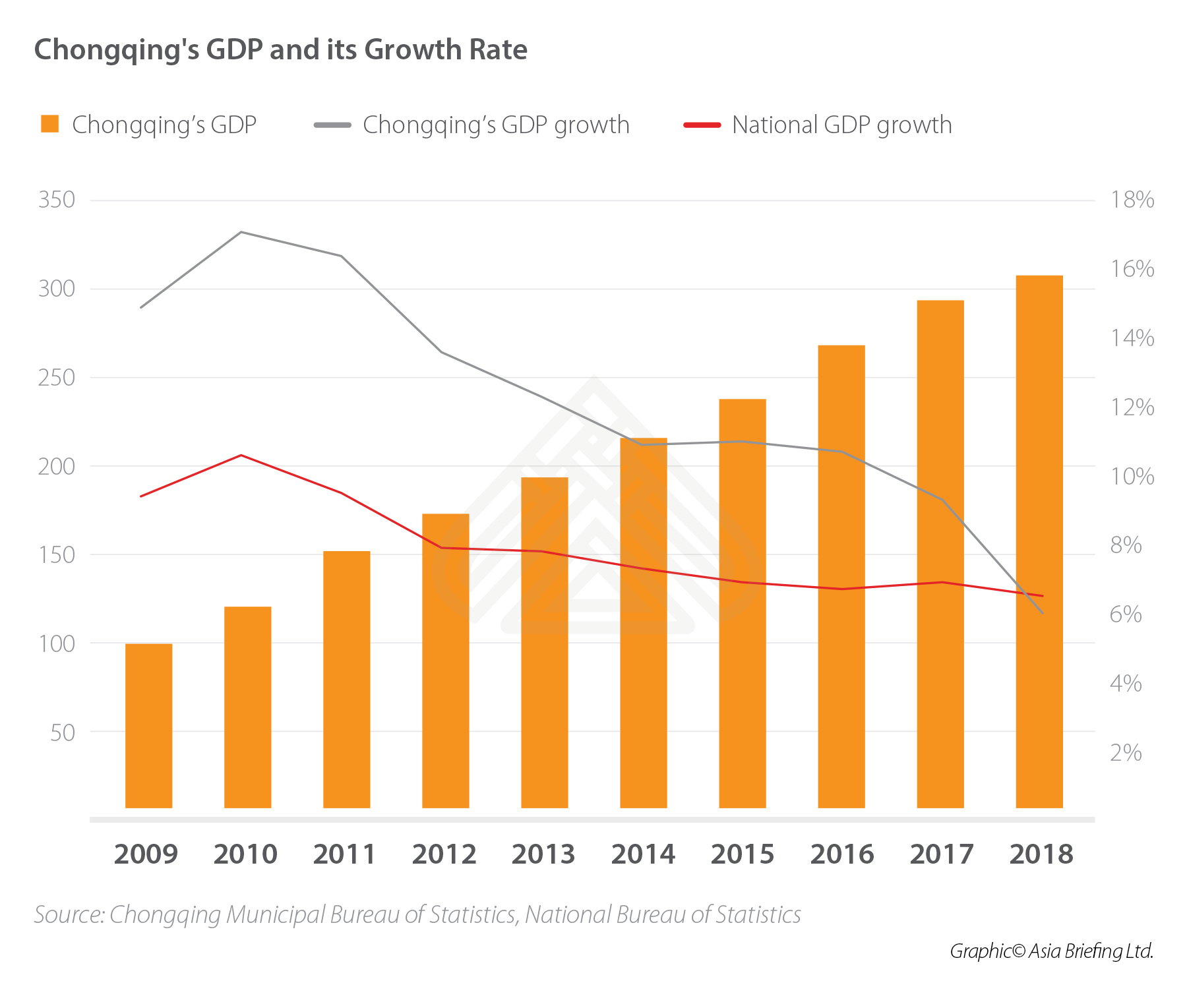
Chongqing is thus a prime example of how China’s state investment-driven economic growth is not a sustainable model. Ultimately, years of big-sticker investment projects funded by regional governments have resulted in a mountain of provincial debt, threatening China’s overall debt sustainability and financial stability.
This partially explains why the national government has begun stressing the need to shift China’s economy from being overwhelmingly invested in manufacturing and infrastructure to a more sustainable model of growth, such as promoting the services/tertiary sector and boosting domestic consumption.
Since 2016, Chinese authorities have initiated a “deleveraging campaign” to pare the massive debt levels of the banking and corporate sector. Possibly affected by this, fixed investment growth in Chongqing slowed to 9.5 percent in 2017 and slumped to only seven percent last year.
Decline of Chongqing’s traditional pillar industries
Chongqing’s economy is dominated by the manufacturing sector – with the secondary industry accounting for more than 40 percent of its GDP. And it has two major pillar industries – automotive manufacturing and electronic manufacturing. These two industries account for more than 40 percent of its industrial sector GDP.
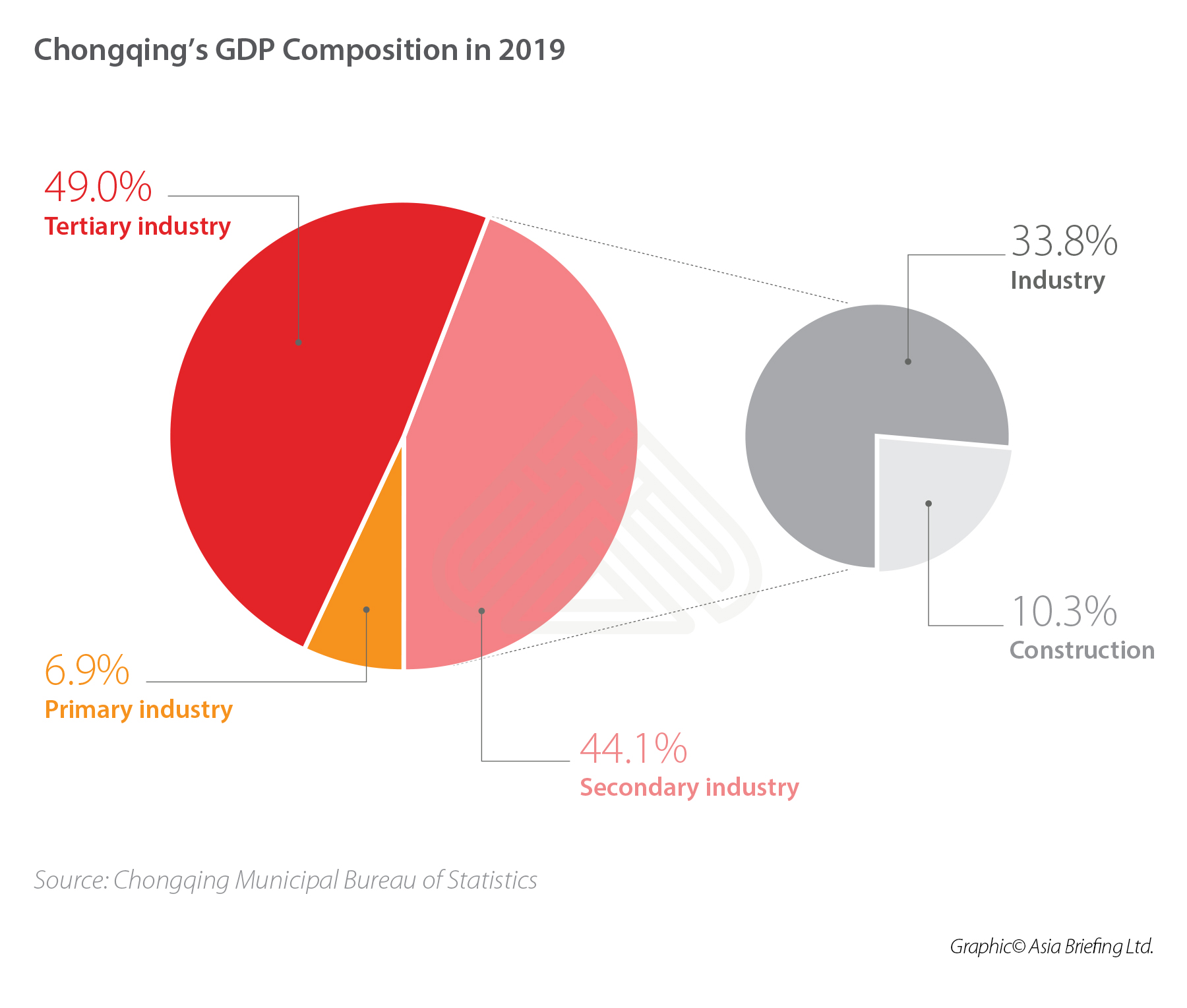
Unfortunately for Chongqing, the growth of car manufacturing collapsed in 2018 – to negative 17.3 percent from 6.2 percent the year before – because of a saturated market and the fact that mostly lower-end car models were manufactured in Chongqing.
Chongqing’s economic woes were compounded by the fact that the growth of its electronic manufacturing industry also slowed to 13.6 percent from 27.7 percent in 2017. Five out of seven key industries saw much slower growth in 2018 in Chongqing as shown in the table below.
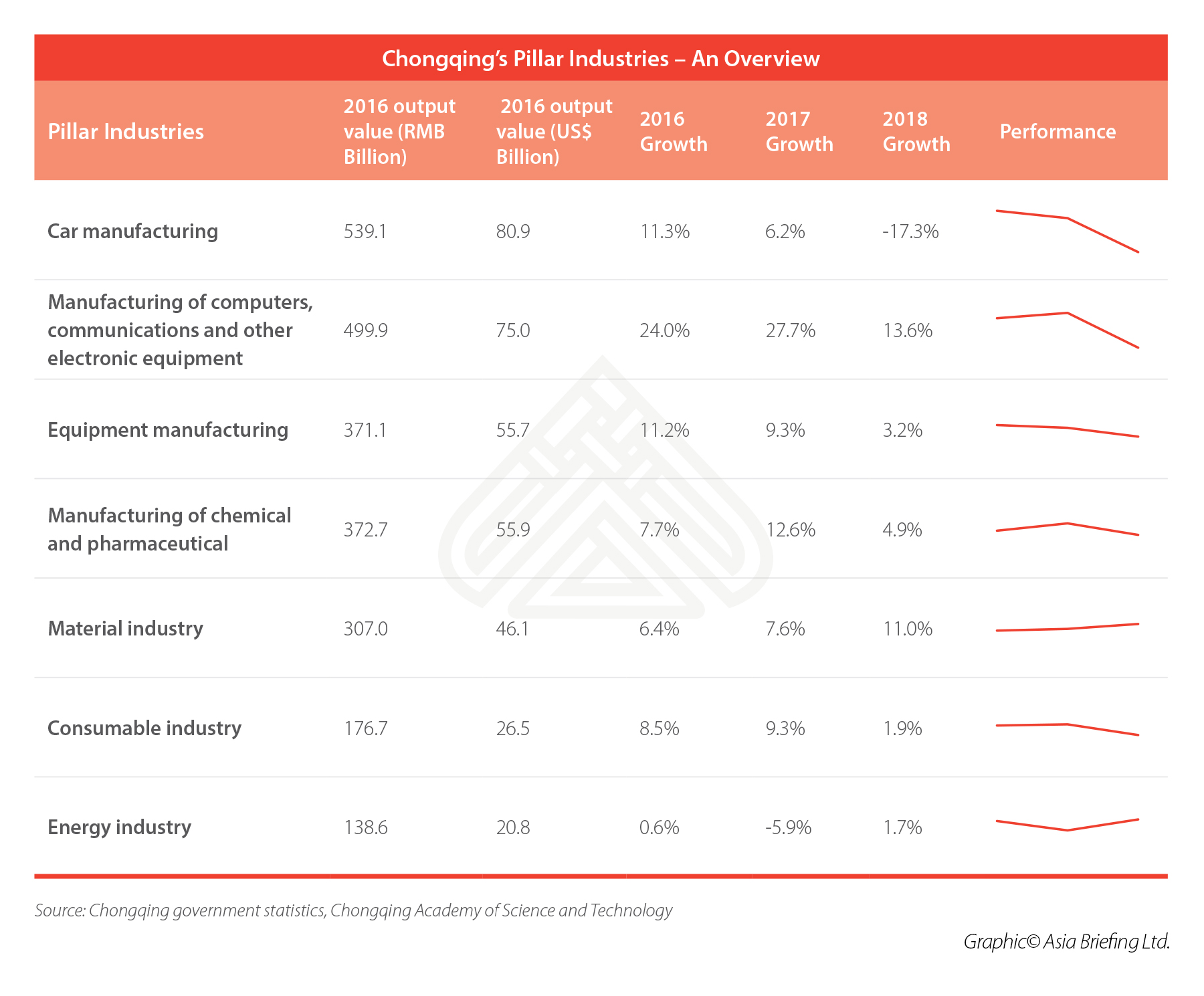
In total, the overall growth of Chongqing’s secondary industries slowed to three percent from 9.5 percent in 2017. And the growth of industrial production (mainly manufacturing) dropped to 0.5 percent from 9.6 percent in 2017.
These factors combined to force a slowdown in Chongqing’s economy growth speed – resulting in an all-time low since it became a provincial-level city in 1997.
Why Chongqing needs to update its industrial capability
Chongqing’s sudden decline in growth is not the most dramatic case in China. There are precedents as in the case of other industrial and manufacturing regions, such as Liaoning, Jilin, Heilongjiang, and Tianjin. Behind the sharp drops in the GDP growth of these cities lies the difficulty of upgrading existing industrial capabilities.
Chongqing’s car manufacturing industry, for example, occupies the low-end of the industry chain, leaving it most exposed to market pressures. Chongqing mainly manufactures middle and low-end car models due to the relatively lower consumption power in China’s midwestern regions.
For instance, the cancellation of preferential tax policies for vehicles with lower displacement of 1.6 liters or below in 2017 and the declining auto market in 2018 resulted in the sales of Chang ‘an, a major state-owned automobile manufacturer in Chongqing, dropping sharply by 59.3 percent last year.
Chongqing was once the largest auto manufacturing base in China with the production of cars over three million units. In order to revitalize the car manufacturing industry, Chongqing’s government recently released policies to promote the development of new energy and intelligent network vehicles.
The policies include accelerating the construction of infrastructure for new energy vehicles, encouraging joint ventures to introduce high-end brands and high-end car models, supporting a number of enterprises in establishing municipal R&D centers, introducing well-known domestic and foreign institutions to set up R&D bases in Chongqing, among others.
In 2017, 40,418 new energy vehicles were produced in Chongqing, accounting for 5.1 percent of the national production, up 403.5 percent year-on-year. By the end of April 2018, 8,503 charging piles had been built in the city.
Chongqing’s appeal to foreign investors: Development zones, technology, tax breaks
Thanks to the comparatively low operational costs, well-established infrastructure, and a pool of skilled labor, Chongqing is still one of the most appealing regions among China’s central and western provinces for foreign investors.
Chongqing’s government has put efforts into promoting the city’s economic transformation and upgrading, like actively developing industrial parks and promoting the electronic manufacturing industry as well as other emerging industries, such as high-end equipment manufacturing, new materials manufacturing, and the new energy industry.
As of 2017, 16 bonded zones, five national high-tech zones, and 41 municipal development zones were set up in Chongqing. In 2018, official data showed that the added value of high-tech industries in Chongqing increased by 13.7 percent year-on-year, contributing 411.7 percent to the growth of overall industrial production.
The added value of the other emerging manufacturing sector, such as the new-generation information technology industry, biological industry, new materials industry, and high-end equipment manufacturing industry, grew by 13.1 percent, contributing 495.2 percent to the growth of overall industrial production.
With the rapid growth in electronic and high-tech manufacturing, leading multinational companies from the electronic industries, including Hewlett-Packard, Foxconn, Inventec, Acer, IBM, Honeywell, CISCO, and HP have established a presence in Chongqing.
By the end of 2018, 287 of the world top 500 companies set up operations in Chongqing. The actual use of foreign investment in Chongqing has exceeded US$10 billion for eight consecutive years. This popularity is no doubt aided by preferential policies from the central government to develop inland regions.
In early 2017, the State Council released a guideline aiming to increase FDI into the central and western provinces and provided a catalogue of prioritized industries. Similarly, the format of the 2019 Draft Encouraged Catalogue has also changed to encourage specific regional investments, including the central, western, and northeastern regions.
Notably, a majority of the industrial sub-sectors added are under high-tech manufacturing, artificial intelligence, and other intelligent technology for health advancement, recycling or environmentally friendly practices, or new agricultural practices.
In response to the central policy to attract foreign business and develop the high-tech sector, in August 2018, Chongqing authorities released updated preferential policies, which include tax incentives, land and real estate benefits, foreign exchange management and credit, import and export assistance, and visa advantages. The details can be found here.
Chongqing’s high-tech zones, such as Liangjiang New Area and Xiyong Micro-Electronics Industrial Park with electronics, information technology, integrated circuits, and software as target industries, offer preferential land policy, subsidy, and credit support. These zones also have bonded facilities to attract export-oriented production activities.
In 2018, the total value of Chongqing’s foreign trade reached RMB 522.26 billion (US$77 billion) – up 15.9 percent year-on-year, crossing the RMB 500 billion (US$74.50 billion) mark after a four-year gap, within which the exports of laptops in Chongqing increased by 85.6 percent.
China’s economy is slowing down, but opportunities can still be found in provinces and cities where the focus is economic transformation and upgrading industrial capabilities. Chongqing, as the western logistics hub in the middle reaches of the Yangtze river and an established manufacturing base in China, remains an ideal destination for foreign investors despite hiccups in its recent economic performance.
About Us
China Briefing is produced by Dezan Shira & Associates. The firm assists foreign investors throughout Asia from offices across the world, including in Dalian, Beijing, Shanghai, Guangzhou, Shenzhen, and Hong Kong. Readers may write china@dezshira.com for more support on doing business in China.
- Previous Article 2019中国进口关税和出口关税税率下调 -多项产品受影响
- Next Article The US-China Trade War and Declining Trade? We’ve Been Here Before.
